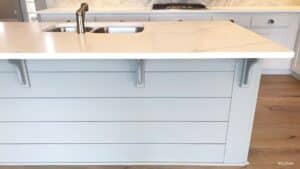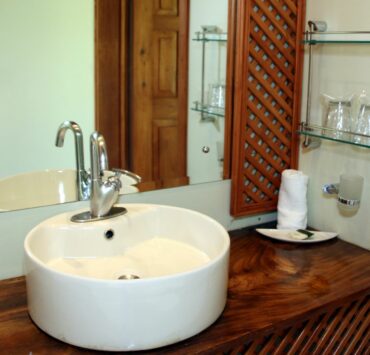The Philodendron Red Emerald (Philodendron erubescens) is an attractive, tropical houseplant that is popular among gardening enthusiasts for its striking foliage and ease of care. Native to Central and South America, this evergreen perennial is known for its large, heart-shaped leaves and deep red stems. In this article, we’ll provide a comprehensive guide on how to grow and care for Philodendron Red Emerald, ensuring your plant thrives and remains healthy.
- Understanding Philodendron Red Emerald
The Philodendron Red Emerald is a climbing or trailing plant belonging to the Araceae family. It features large, glossy, heart-shaped leaves with a deep green color and red highlights, as well as vibrant red stems. These plants can grow up to 10 feet in length, making them a stunning addition to any indoor or outdoor garden.
- Light Requirements
When it comes to light, the Philodendron Red Emerald prefers bright, indirect sunlight. Direct sunlight can scorch its delicate leaves, causing them to turn yellow or brown. Therefore, it’s best to place your Philodendron near a window with filtered light, such as behind sheer curtains, or in an area that receives dappled sunlight. In low-light conditions, the plant’s growth may become slow or leggy.
- Temperature and Humidity
Philodendron Red Emeralds thrive in temperatures between 65-80°F (18-27°C), making them ideal houseplants for most climates. Keep in mind that these plants are sensitive to cold temperatures and can suffer from leaf damage if exposed to temperatures below 55°F (13°C) for an extended period.
As tropical plants, they also appreciate high humidity levels, between 60-80%. To maintain the ideal humidity, consider placing your plant on a tray of water-filled pebbles, using a room humidifier, or misting the leaves regularly. Make sure not to overdo it, as excessive moisture can lead to fungal issues.
- Soil and Potting
The Philodendron Red Emerald requires well-draining soil to prevent root rot. Use a high-quality potting mix that contains peat moss, perlite, and/or vermiculite, which will help maintain a balance between moisture retention and drainage. You can also add a bit of bark or coco coir to the mix for added aeration.
When selecting a pot, opt for one with drainage holes to avoid waterlogged soil. Repot your Philodendron Red Emerald every 2-3 years, upgrading to a larger pot as needed to accommodate the plant’s growth.
- Watering
Like most Philodendrons, the Red Emerald prefers consistently moist soil but is sensitive to overwatering. Water your plant when the top inch of soil feels dry to the touch, ensuring the soil is moist but not soggy. Reduce watering frequency during winter months, as the plant enters a dormant phase and requires less moisture.
- Fertilizing
To promote healthy growth, fertilize your Philodendron Red Emerald with a balanced, water-soluble fertilizer every 4-6 weeks during the growing season (spring and summer). Dilute the fertilizer to half-strength to avoid overfeeding, which can cause leaf burn. Stop fertilizing during the fall and winter months, as the plant’s growth slows down.
- Pruning and Training
Regular pruning is essential for maintaining your Philodendron Red Emerald’s shape and size. Use clean, sharp pruning shears to remove dead or yellowing leaves, as well as any long, leggy growth. This will encourage bushier growth and maintain the plant’s overall health and appearance. Prune your plant in the early spring, just before the start of the growing season, for optimal results.
To help your Philodendron Red Emerald achieve its climbing nature, provide it with a moss pole, trellis, or other support structure. As the plant grows, gently tie its stems to the support using soft ties, like cloth or twine, to avoid damaging the plant. This will not only improve the plant’s overall appearance but also encourage it to produce larger leaves.
- Propagation
Propagating Philodendron Red Emerald is relatively easy and can be done through stem cuttings. Here’s a step-by-step guide on how to propagate your plant:
- Choose a healthy stem with at least one leaf and a few aerial roots (the small, brownish nubs along the stem).
- Using sterilized scissors or pruning shears, cut a 4-6 inch section of the stem, ensuring it includes at least one leaf and aerial root.
- Remove any lower leaves, leaving only the top two or three leaves on the cutting.
- Place the cutting in a jar of water, making sure the aerial root is submerged, but the leaves are not touching the water.
- Keep the jar in a warm, brightly lit area, avoiding direct sunlight.
- Replace the water every 2-3 days to prevent bacterial growth.
- After 2-4 weeks, roots should start to develop. Once the roots are at least 2 inches long, the cutting is ready to be planted in soil.
- Common Pests and Diseases
Philodendron Red Emerald plants can occasionally fall victim to pests like spider mites, mealybugs, and aphids. Check your plant regularly for any signs of infestation, and treat affected areas with insecticidal soap or neem oil. Maintaining proper care and cleanliness around your plant can help prevent most pests and diseases.
Overwatering or poor drainage can lead to root rot, a common problem in Philodendrons. To avoid this issue, ensure your plant is potted in well-draining soil and water only when the top inch of soil feels dry.
- Toxicity
It’s essential to note that Philodendron Red Emerald is toxic to humans and pets if ingested. The plant contains calcium oxalate crystals, which can cause irritation, swelling, and pain when ingested or touched. Keep your Philodendron Red Emerald out of reach of children and pets, and wash your hands after handling the plant.
Conclusion
The Philodendron Red Emerald is a beautiful, low-maintenance plant that makes an excellent addition to any home or garden. With proper care, including adequate light, consistent moisture, and the right temperature and humidity levels, your Philodendron Red Emerald will thrive and bring you joy for years to come. Happy gardening!







